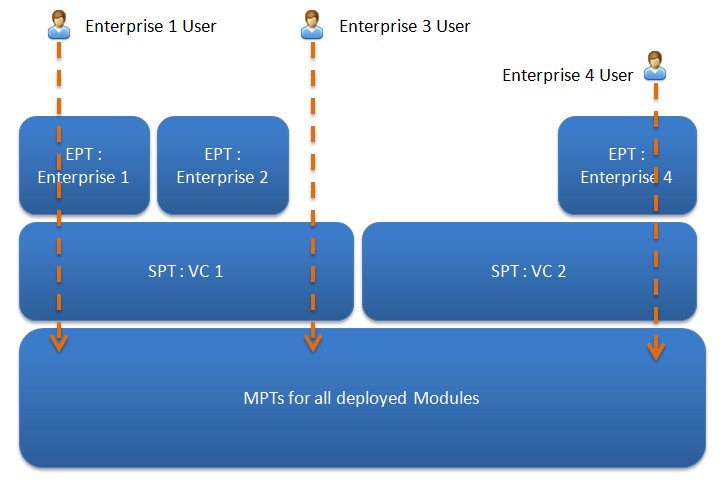Working with the Enterprise Process Template (EPT)
As we saw in the previous section, we can use the SPT to tailor your modules' behavior to accommodate different multi-party communities. But what if I want to further customize the application's behavior for a single enterprise within that multi-party community? For example, what if a particular Enterprise has asked me to build special reports or a custom integration interface?
The Enterprise Process Template (EPT) provides enterprise-specific customization within a multi-party community. It lives as a layer above the SPT into which we can provide additional actions/views/reports/etc., which are visible only to users of a particular enterprise.
The EPT layer is optional, so you will only create EPTs for those Enterprises where you want to implement variation. Furthermore, please note that these features are only available to users under that Enterprise; users from other enterprises (even if they are collaborating on the same transactions) will not be able to see any of the actions or other additions you make in the EPT. Thus it is intended to support Enterprise-private processes only.
As many things are the same in the MPT and SPT, this section will focus primarily on the differences.